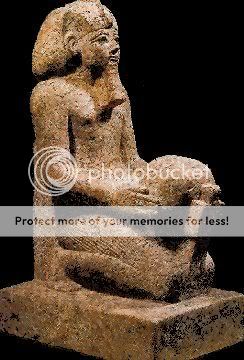Queen Hatshepsut20:55 Jun 29 2007
Times Read: 1,088
Bad tooth solves mystery of pharaoh queen

CAIRO • Archaeologists hailed one of the most important finds in Egyptian history on Wednesday after a broken tooth identified the 3,500-year-old mummy of Queen Hatshepsut, the most powerful female pharaoh.
Billed as the most significant find since the discovery of King Tutankhamun’s tomb in 1922, Egyptian antiquities chief Zahi Hawass made the announcement to a packed press conference in Cairo.
He said one of two mummies found in a tomb in the Valley of the Kings in Luxor about a century ago had been identified as Hatshepsut, the greatest woman monarch of the ancient world.
“The discovery of the Hatshepsut mummy is one of the most important finds in the history of Egypt,” the antiquities chief said.
“I’m sure that this mummy will help us to shed light on this mystery and on the mysterious nature of her death.”

Hatshepsut ruled for 21 years from 1479 to 1458 BC, declaring herself pharaoh after the death of her husband and half-brother Tuthmosis II.
The fabled queen, known for sporting a false beard and dressing like a man, was identified thanks to a broken tooth following examinations of four mummies from the New Kingdom using the latest forensic technology.
Hawass said the mummy identified as Hatshepsut was of a “fat woman in her 50s who probably died of cancer.”
In 1903, archaeologist Howard Carter – who later made history with his discovery of Tutankhamun – found two sarcophogi in tomb 60 in the Theban necropolis, the Valley of the Kings in Luxor.
One apparently contained the mummy of Hatshepsut’s wet nurse, Sitre-In, and the other of an unknown female.
Later in 1920, he found the magnificent funerary temple of Deir el-Bahari which Hatshepsut had built for herself at Luxor.
Mysteriously, two sarcophogi found in the temple were empty.
That is where the search for Hatshepsut had ended until the US-based Discovery Channel asked Hawass to take another look.
The mummies from tomb 60 were brought to Cairo for the first time and Hawass used CT scans to produce detailed 3D images which linked physical traits of the unidentified mummy to those of Hatshepsut’s relatives.
But the definitive proof, according to Hawass, was found in an ancient box bearing the female pharaoh’s royal seal which was discovered in 1881 at her famous Deir el-Bahari temple, scene of a bloody massacre of tourists in 1997.
Inside the box were organs from a mummy and a tooth. Examined for its possible connection to a missing molar in the unidentified mummy from tomb 60, analysts found a match.
“Not only was the fat lady from KV-60 missing a tooth but the hole left behind and the type of tooth that was missing were an exact match for the loose one in the box,” Hawass said.
He said the find could help to explain the mystery of Hatshepsut’s disappearance from the ancient record after her death and the empty sarcophogi in her burial temple.
“Her reign during the 18th dynasty of ancient Egypt was a prosperous one, yet mysteriously she was erased from Egyptian history,” he said.

American Egyptologist Elizabeth Thomas first suggested years ago that the second mummy in tomb 60 belonged to Hatshepsut, because her hand was resting on her chest in a position reserved for monarchs.
Discovery said a team of archaeologists would now carry out DNA testing on the mummy to confirm her identity.
Hatshepsut, the only legitimate daughter of Pharaoh Tuthmosis I who ruled from 1504-1484 BC, reigned before female pharaohs Nefertiti and Cleopatra and is thought to have exercised greater power.
After the early death of her husband Tuthmosis II, she reigned as regent for his son by a concubine, Tuthmosis III, who was too young to rule.
Hatshepsut declared herself pharaoh, donning royal headdress and a false beard, and claimed divinity through the intervention of the god Amun-Ra.

Her rule is seen as a time of stability and prosperity for Egypt, associated more with commerce than conquest, especially the opening of trade routes to Nubia and Somalia in the south. Her most famous landmark is Deir el-Bahari.
Records of her reign suddenly end after her death. Her jealous successor Tuthmosis III – long kept in the shadows – demolished her monuments and her mummy was thought to have been lost forever.
“This was a pure settling of dynastic scores and not a misogynist political reaction against the promotion of a woman to the supreme position,” said French expert Jean Yoyotte.










COMMENTS
-
Dagaz
20:28 Sep 06 2009
Oh yeah! I remember watching this on Discovery. Thanks for the reminder :)